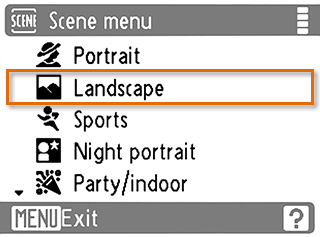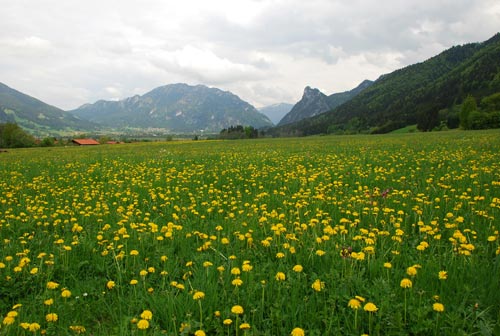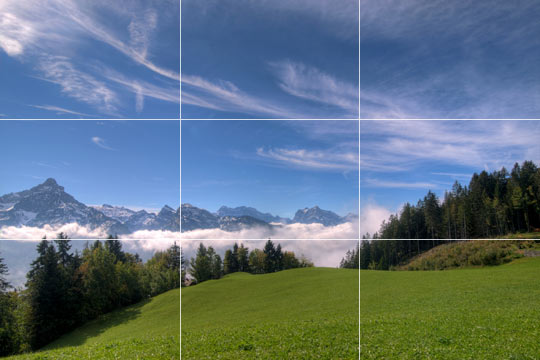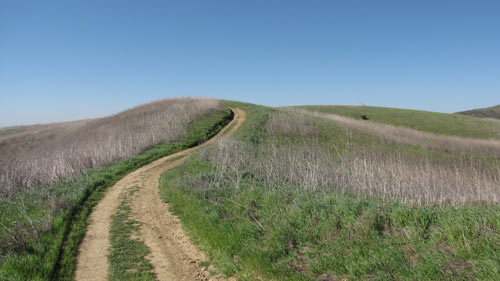Digital Photography
Photographing Landscapes
Photographing landscapes
 A landscape photo
A landscape photoLandscapes are a great opportunity to experiment with photo composition. You may want to use the rule of thirds or leading lines (such as roads or rivers) to make a more pleasing image. You can also include foreground objects to give a sense of depth to the photo.
Below are a few tips you can use to improve your landscape photography:
- Use the Landscape scene mode. This mode automatically focuses on infinity, which means it focuses as far away as possible (and also keeps the depth of field as large as possible). This ensures the background landscape will be in focus, as well as the foreground objects.
 Selecting the Landscape scene mode
Selecting the Landscape scene mode - Use a smaller aperture if possible. If you are using a DSLR or bridge camera, use a smaller aperture (such as f/16). This will increase the depth of field and ensure the background and foreground are in focus.
- Keep the camera level. Landscapes usually look best when the camera is level. It will be easier to keep the camera straight if you are using a tripod.
- Try to find an interesting foreground object. Landscapes aren't just about the background. If you can include an interesting object in the foreground, it will add a sense of depth to the photo.
 Using flowers in the foreground to add depth
Using flowers in the foreground to add depth - Use the rule of thirds. If the horizon is visible, try to place it near one of the grid lines instead of in the middle of the photo.
 Using the rule of thirds to compose the photo
Using the rule of thirds to compose the photo - Use leading lines. Is there a road, sidewalk, river, or stream you can use in your landscape? These are known as leading lines because they help to lead the eye into the photograph.
 Using leading lines to draw the viewer's eye into the photo
Using leading lines to draw the viewer's eye into the photo






